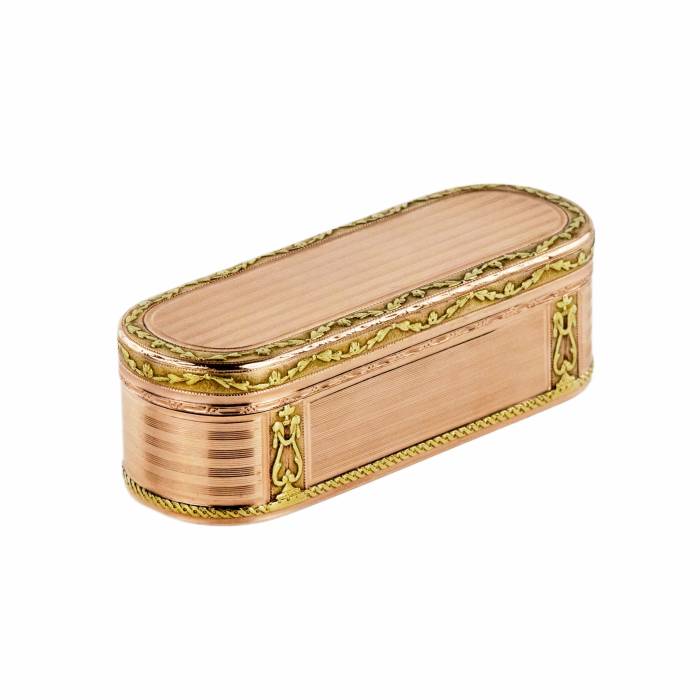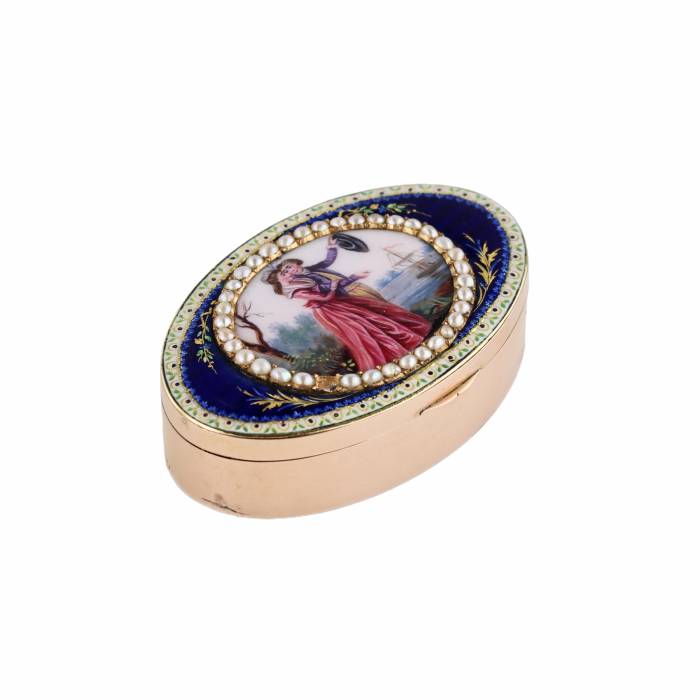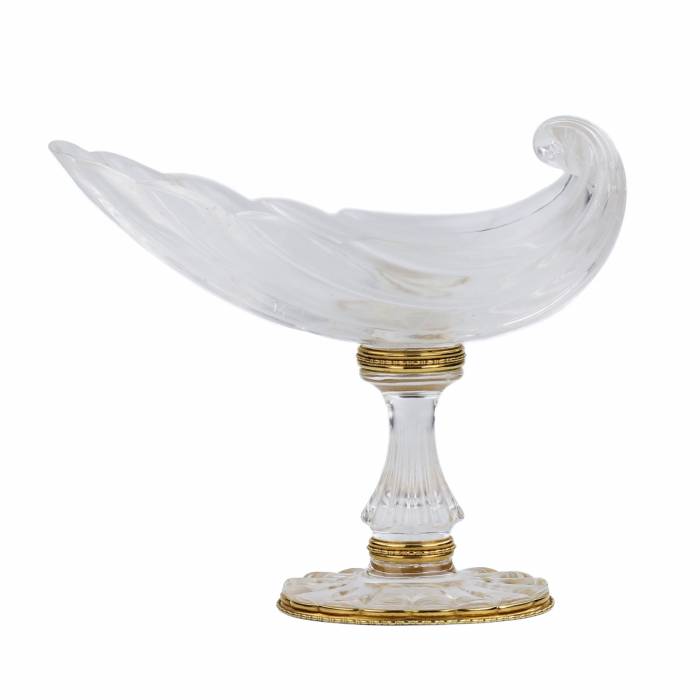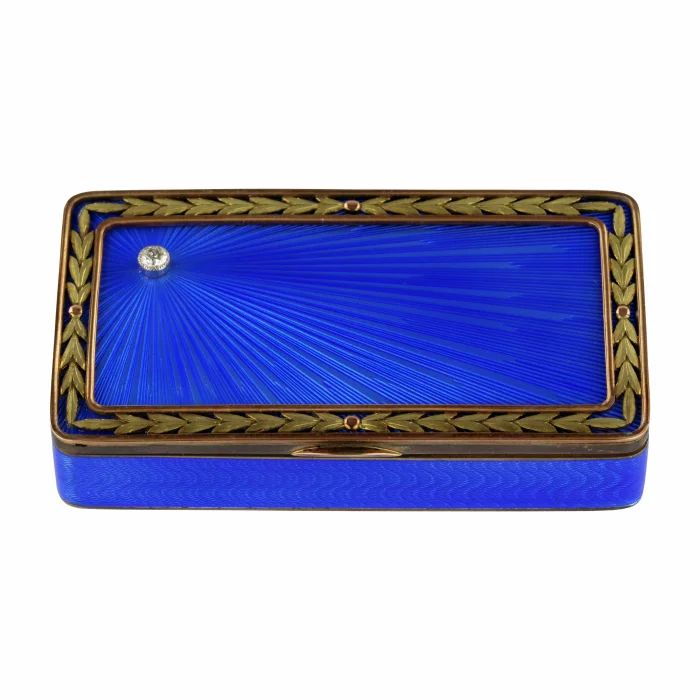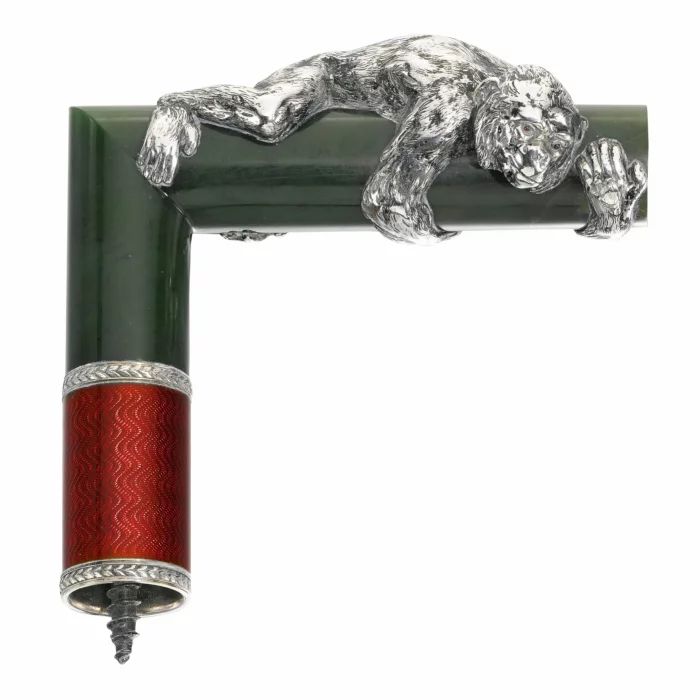
AntiqonART consultant will contact you within one business day after receiving your request.

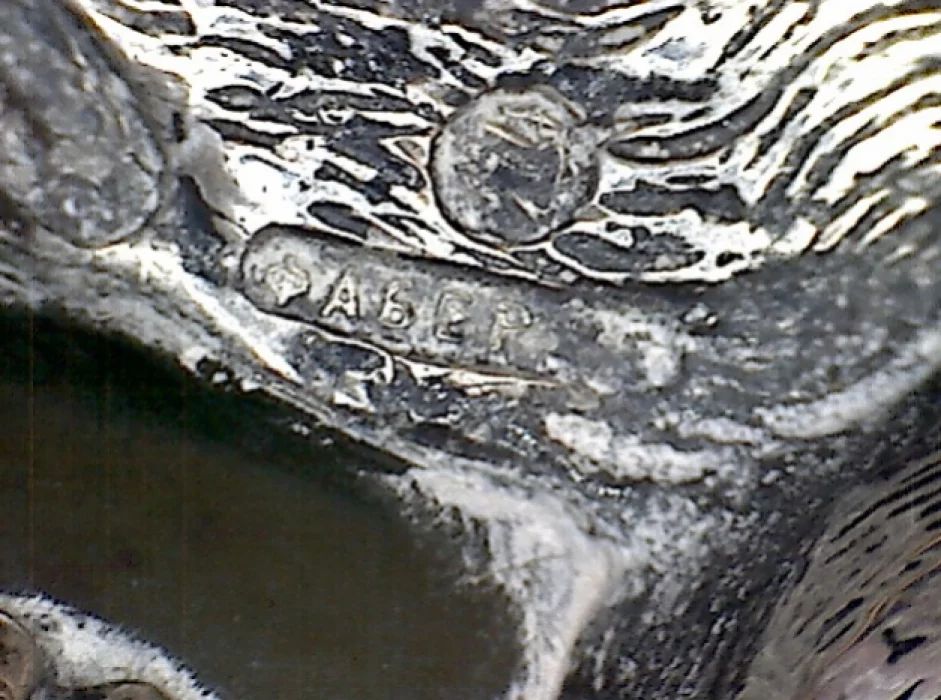
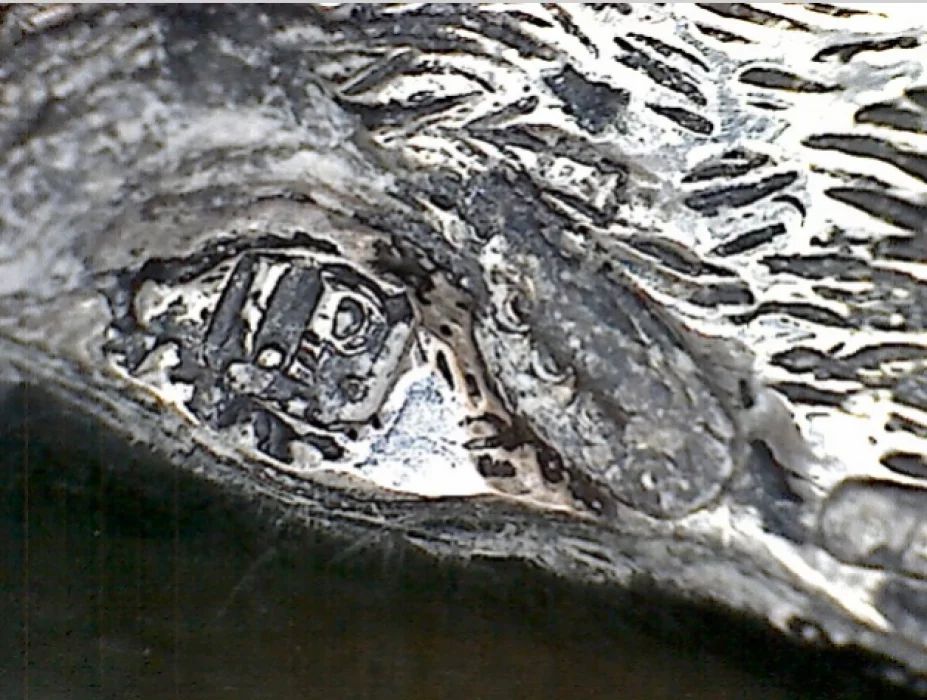
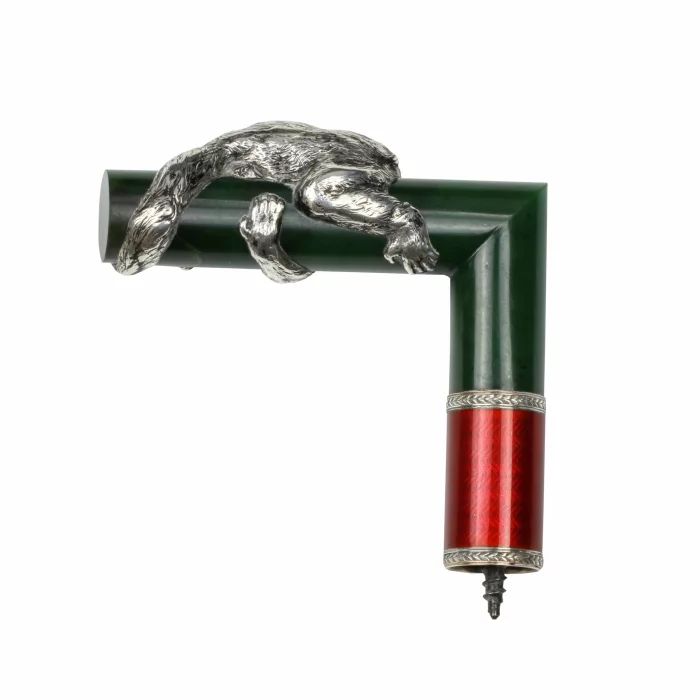
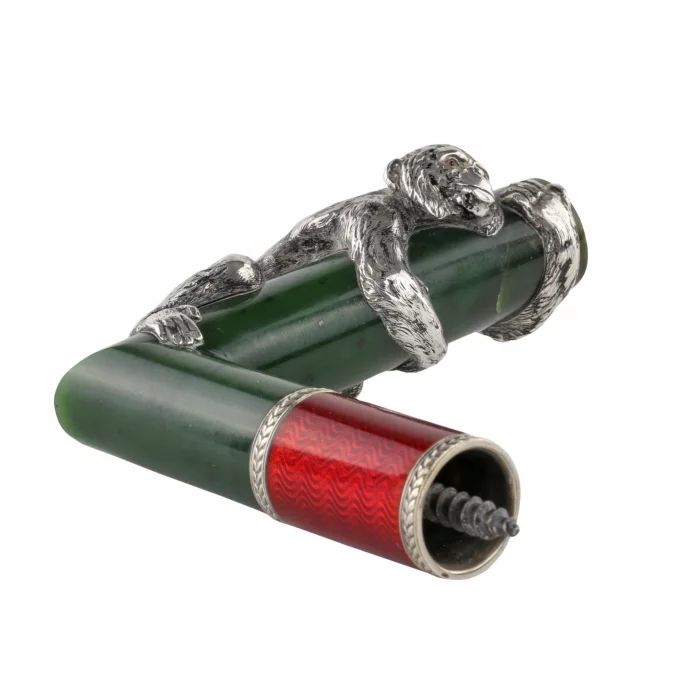
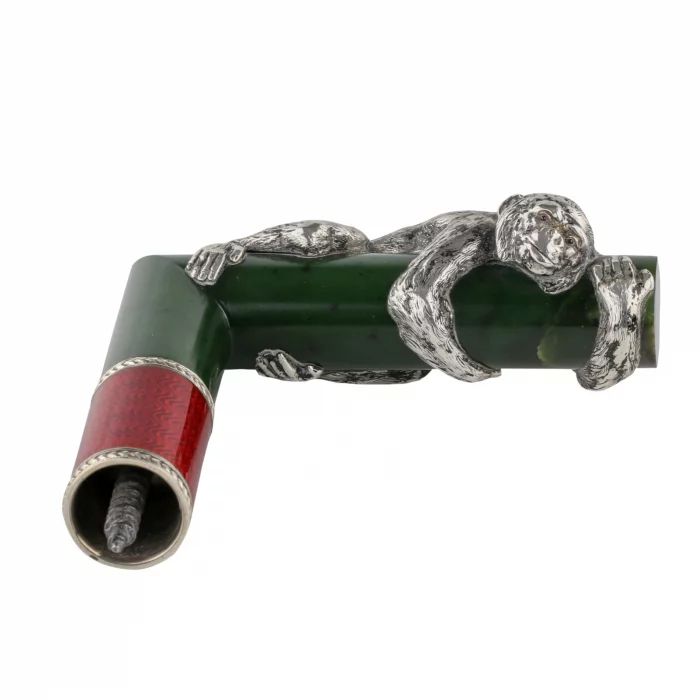
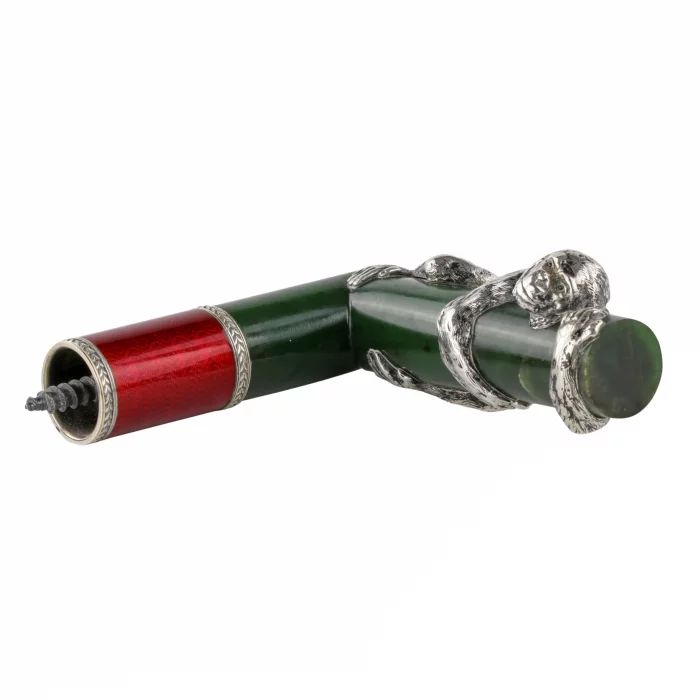
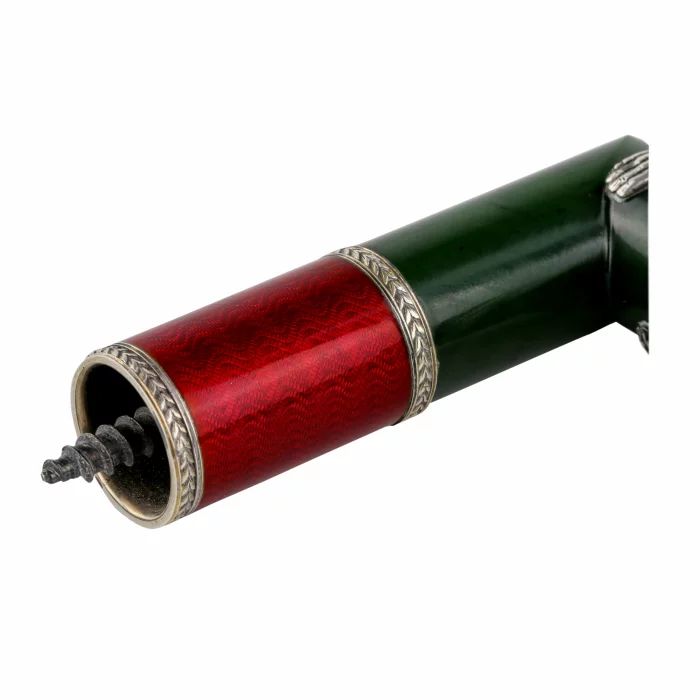
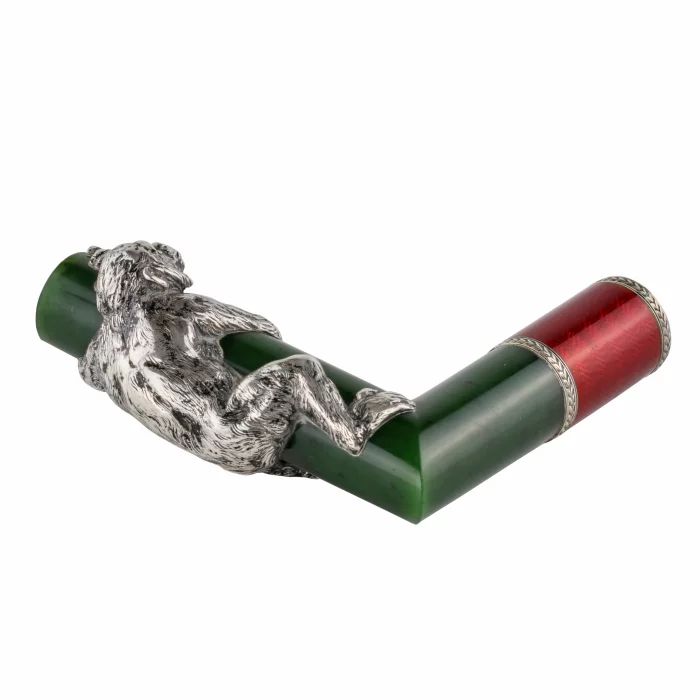
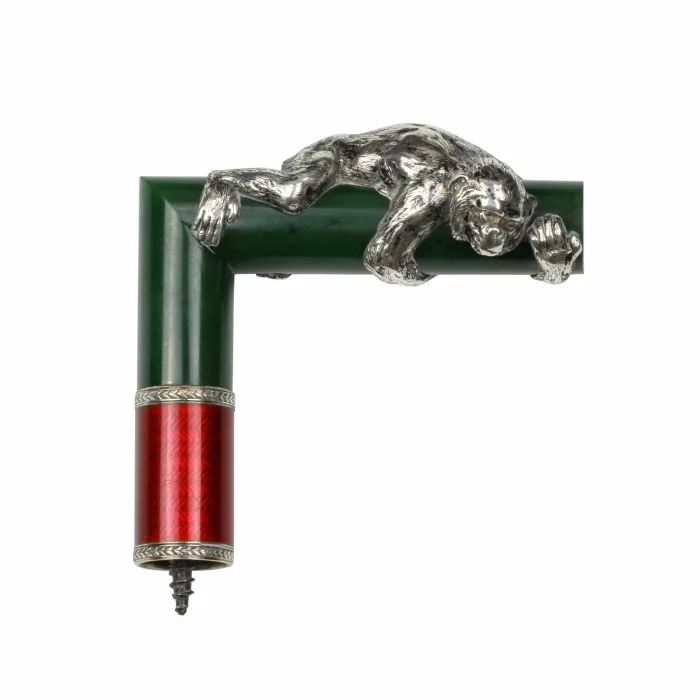










At Antiqon ART, we build trust and value your choice. Every purchase of art and antiques with us is an investment backed by our expertise, reputation, and a 100% authenticity guarantee.
Discover how the value of similar works has evolved over the past 10 years. Art is not only beauty — it's an investment.
Antiqon ART offers free packaging, insurance, and delivery for most items purchased through the company. Exceptions include large and oversized items that require specialized packing and shipping.
La poignée est taillée dans une néphrite vert foncé, enlacée par une figurine de singe en argent moulé et ciselé. Le modelé de la sculpture est d’une grande finesse : la fourrure est rendue avec expressivité, et les traits du visage sont d’un réalisme frappant. Les yeux sont sertis de rubis taillés en cabochon.
La partie inférieure est décorée d’un émail rouge guilloché sur argent, encadré de feuilles de laurier ciselées. Un mécanisme vissé interne assure la fixation à la canne. La forme en angle est typique des accessoires de luxe du début du XXe siècle.
Poinçons : K. Fabergé sous le cachet impérial ; initiales I.P. (Julius Rappoport) ; titre 88 pour largent ; poinçon de Saint-Pétersbourg (1899–1904)
Dimensions : Hauteur — 9,5 cm ; Longueur — 8,2 cm
Provenance : Collection privée européenne
Julius Rappoport, maître orfèvre en chef, se distinguait par la vitalité de ses formes et son excellence technique. Le singe — motif inhabituel dans les arts russes — évoque la malice, l’intelligence et l’observation. Ses yeux rubis et sa fourrure finement ciselée confèrent à la figure un réalisme presque expressif.
La néphrite, pierre appréciée tant pour sa solidité que sa symbolique, reflète aussi l’engouement de l’époque pour les matériaux orientaux et le dialogue russo-chinois. L’émail rouge guilloché, signature technique de Fabergé, ajoute éclat et profondeur. Chaque détail illustre le soin extrême porté à la conception, même dans les éléments utilitaires.
Les œuvres de Rappoport figurent aujourd’hui dans les collections de l’Ermitage, du musée Fabergé à Saint-Pétersbourg, du Victoria & Albert Museum, et de nombreuses collections privées. Cette poignée illustre à merveille l’élégance fonctionnelle de la Russie impériale finissante.
État de collection exceptionnel. Aucun défaut ni restauration. Émail et gravure conservés. Poinçons nets. Pierre et mécanisme en parfait état.
The condition report is provided for informational purposes only.
It is not comprehensive and may not reflect all defects, restorations, alterations, or adaptations, as Antiqon does not perform professional conservation-level assessments. The information is based on a qualified, yet subjective, evaluation by our specialists.Before purchasing, we recommend consultation with an independent expert.Please also consult our Terms and conditions and Glossary A-Z, which contain important information on lot characteristics and sale conditions.

Thank you for your request!
Our consultant will contact you soon.

AntiqonART consultant will contact you within one business day after receiving your request.
Thank you for your request!
Our consultant will contact you soon.

AntiqonART consultant will contact you within one business day after receiving your request.












